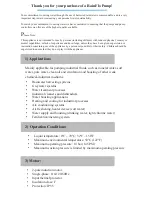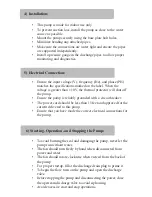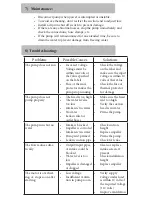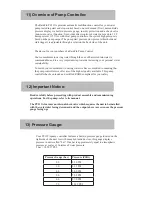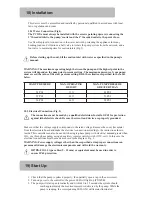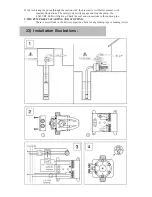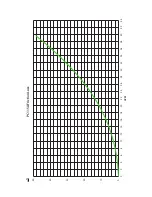
• This pump is made for indoor use only.
• To prevent suction loss, install the pump as close to the water
source as possible.
• Mount the pump securely using the base plate bolt holes.
• Minimize bending any attached pipes.
• Make sure the connections are water tight and ensure the pipes
are supported independently.
• Install a pressure gauge in the discharge pipes to allow proper
monitoring and diagnostics.
• Ensure the input voltage (V), frequency (Hz), and phase (PH)
matches the specifications marked on the label. When the
voltage is greater than ± 10V, the thermal protector will shut off
the pump.
• Ensure the pump is reliably grounded with a circuit breaker.
• The power cord should be less than 15 feet and approved for
the
current delivered to this pump.
• Ensure that you have made the correct electrical connections
for
the pump.
•
To avoid burning the seal and damaging the pump, never
let the
pump run without water.
•
The fan should turn freely by hand when disconnected
from
power
and
water.
•
The fan should rotate clockwise when viewed from the
back of
the pump
•
For proper startup, fill at the discharge drain plug to prime
it.
•
To begin the flow, turn on the pump and open the discharge
valve.
•
Before stopping the pump and disconnecting the power,
close
the
upstream discharge valve to avoid siphoning.
• Avoid excessive start and stop operations.
5)
Electrical Connection
:
6)
Starting, Operation, and Stopping the Pump
:
4)
Ins
tallation
:
Summary of Contents for MHP75A
Page 12: ...MHP75A MHP150A Pump...


